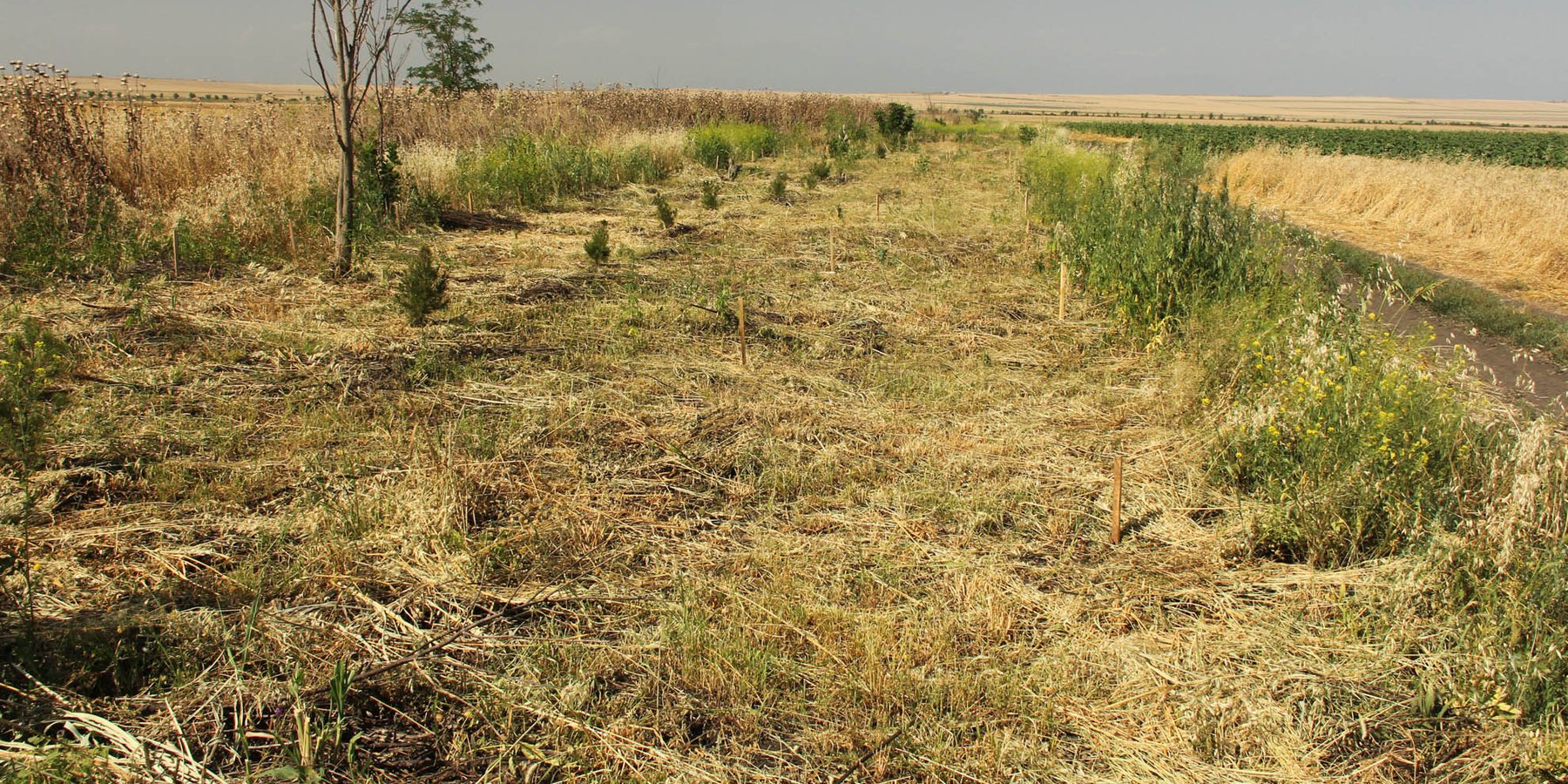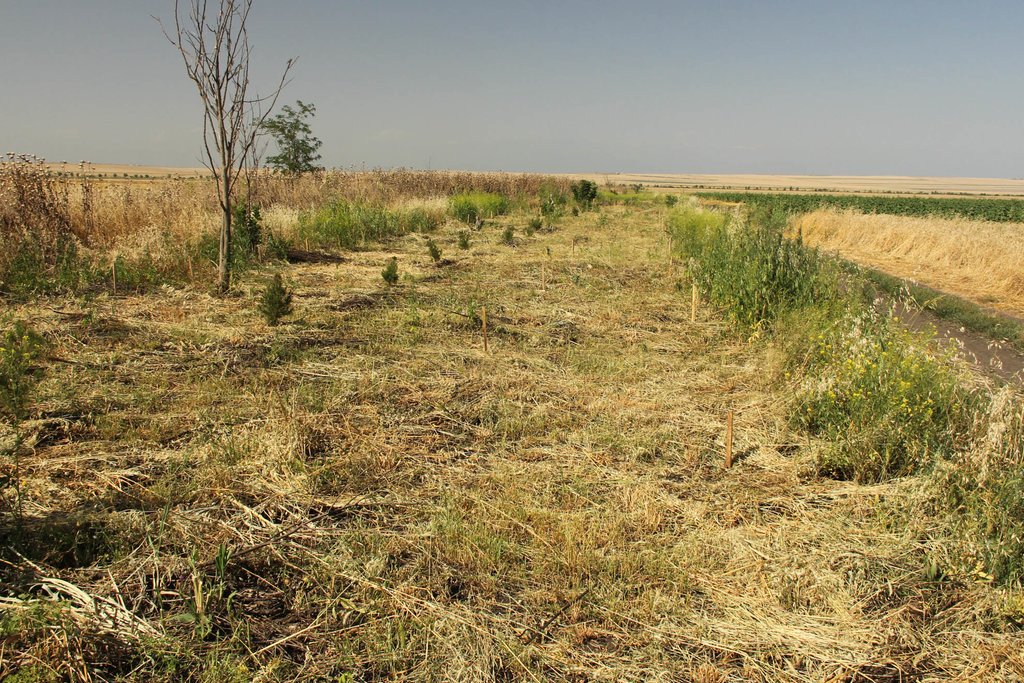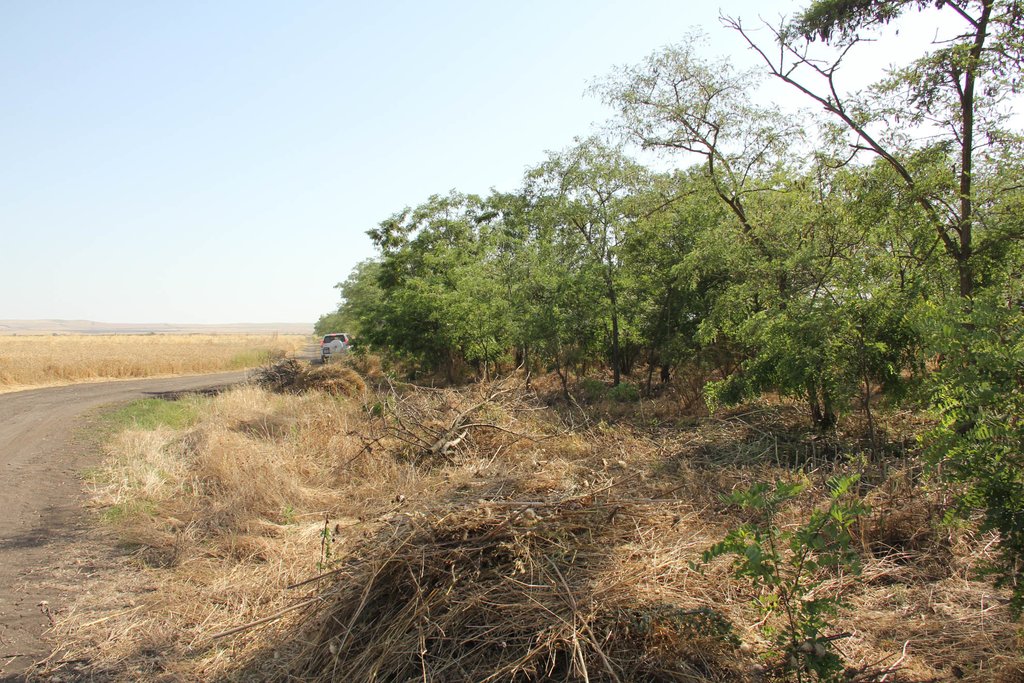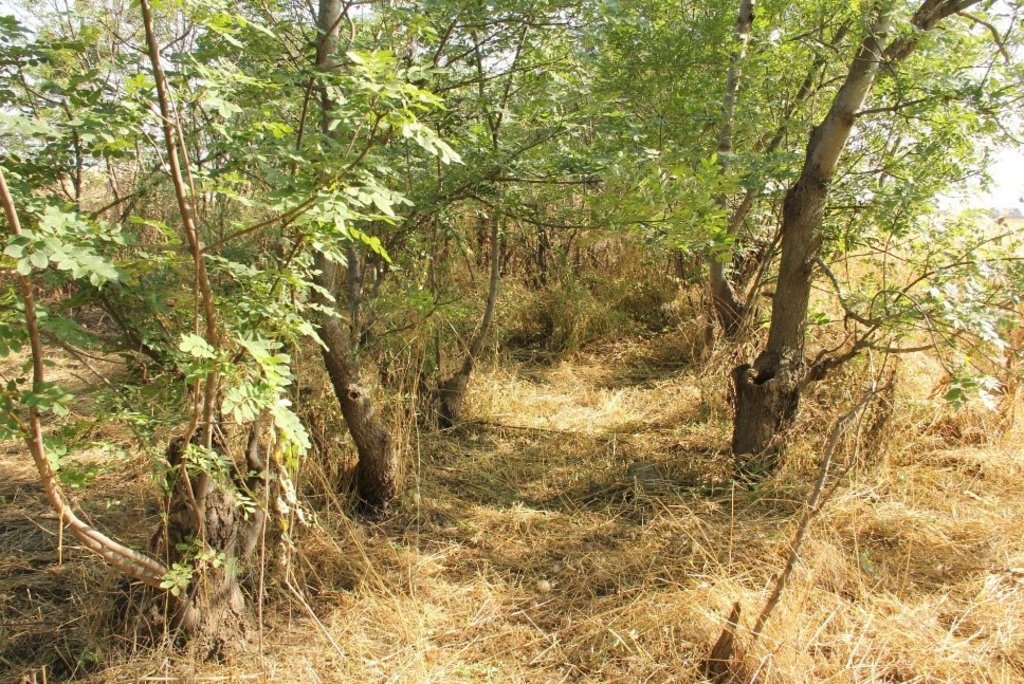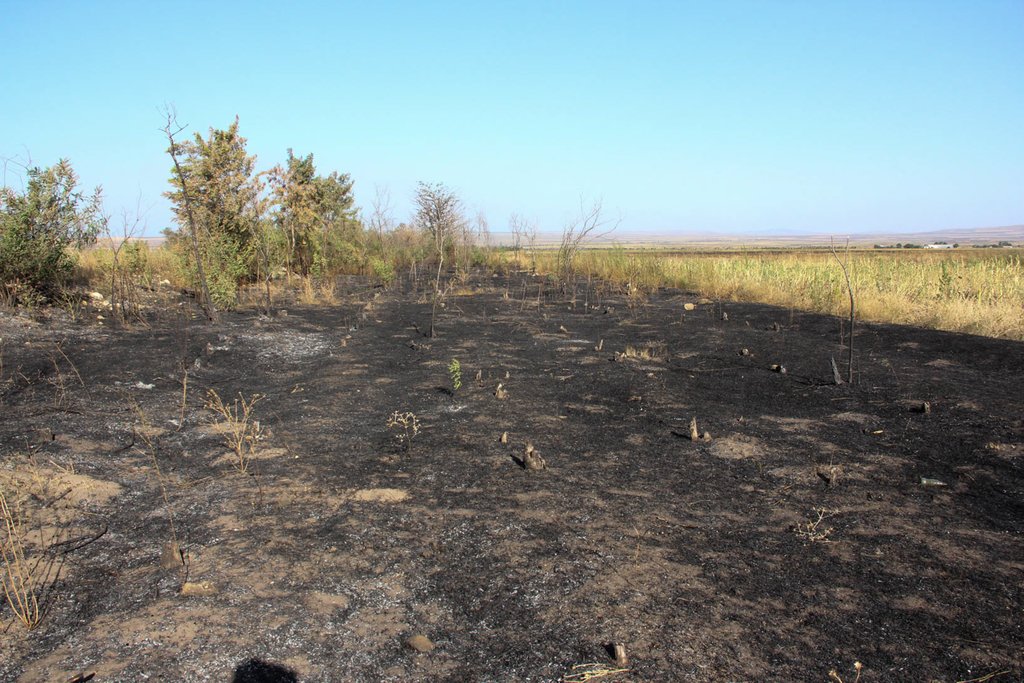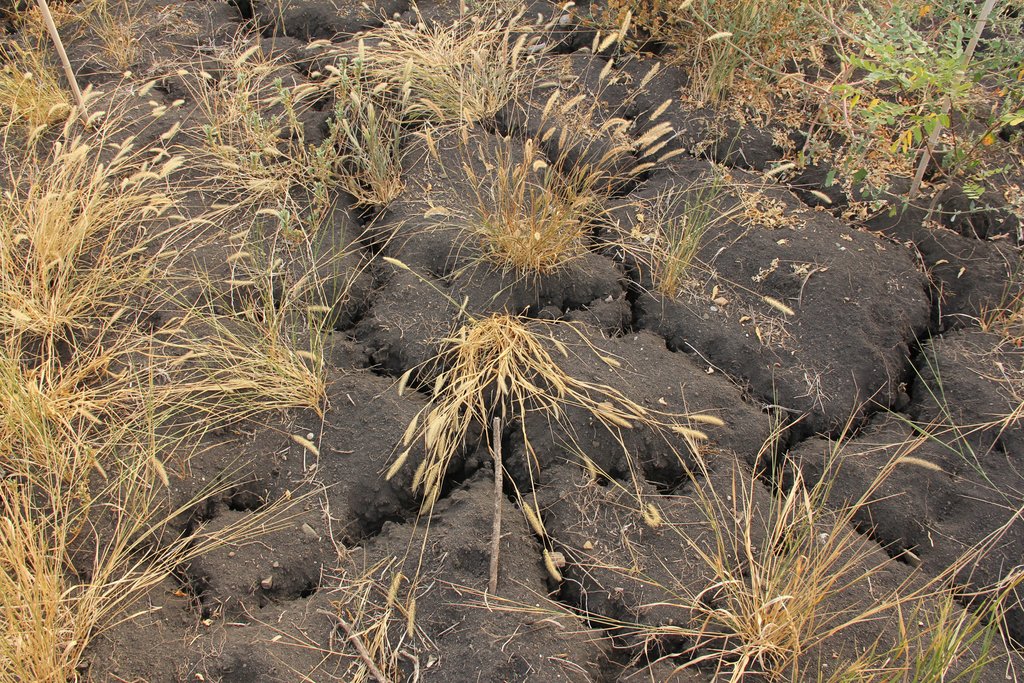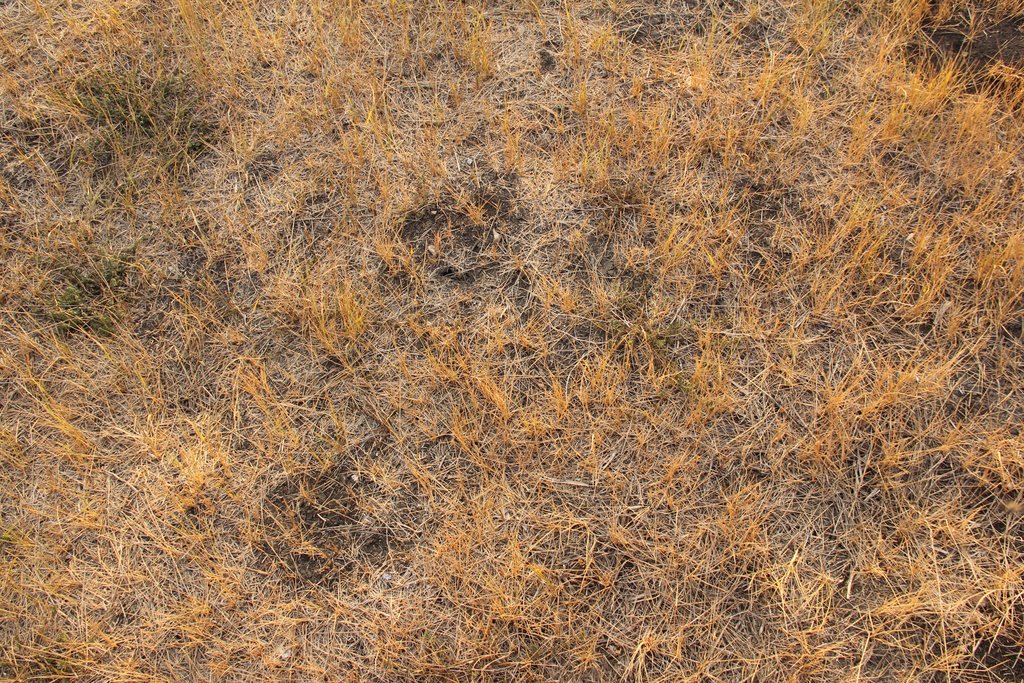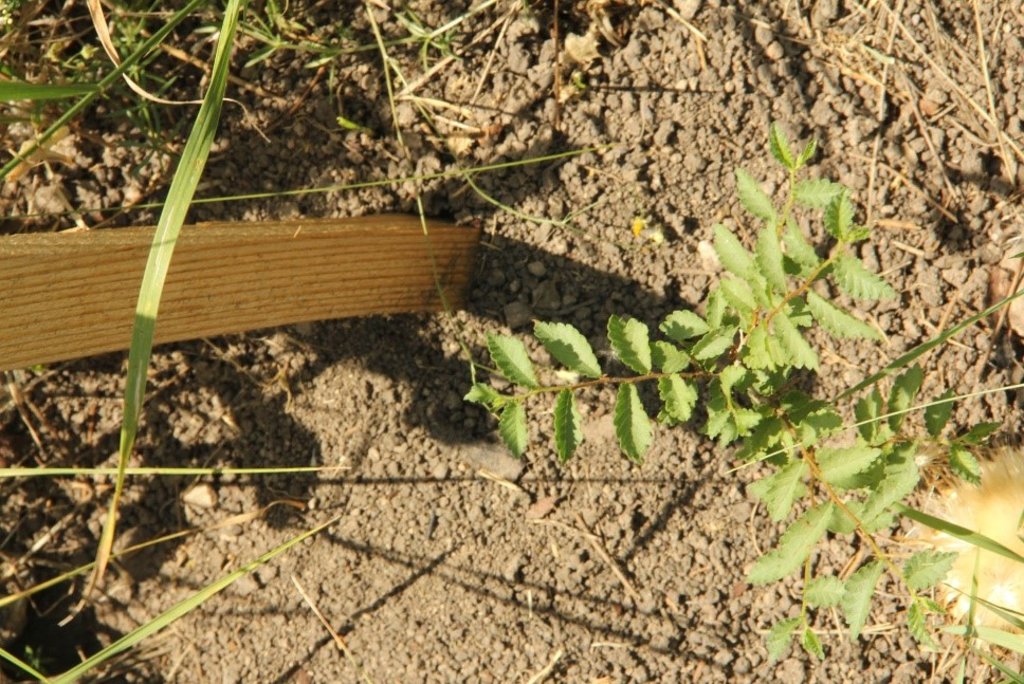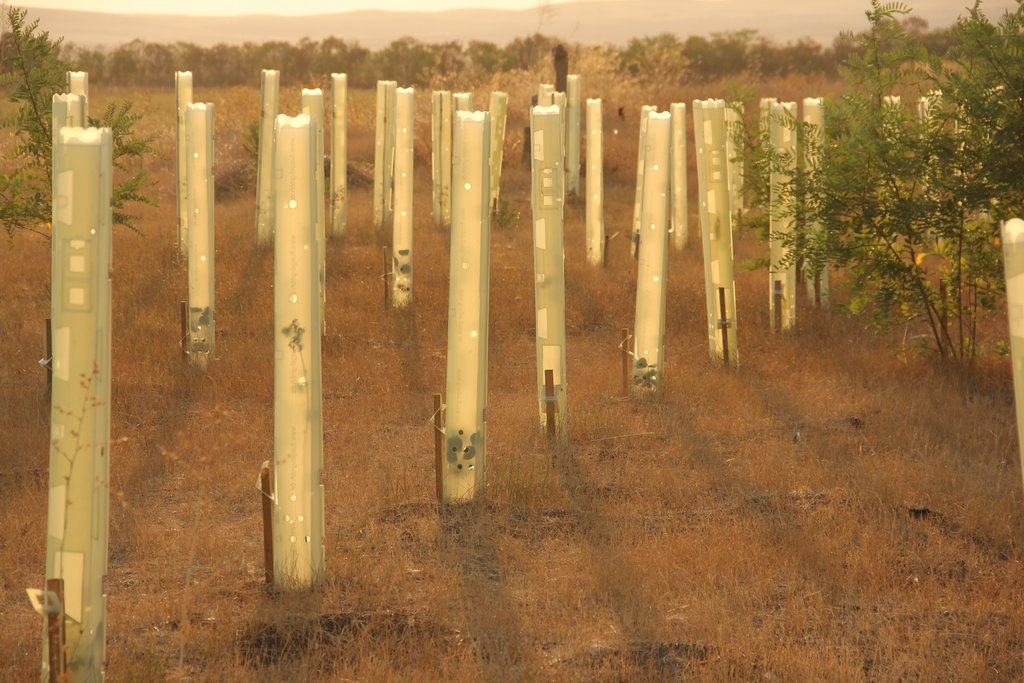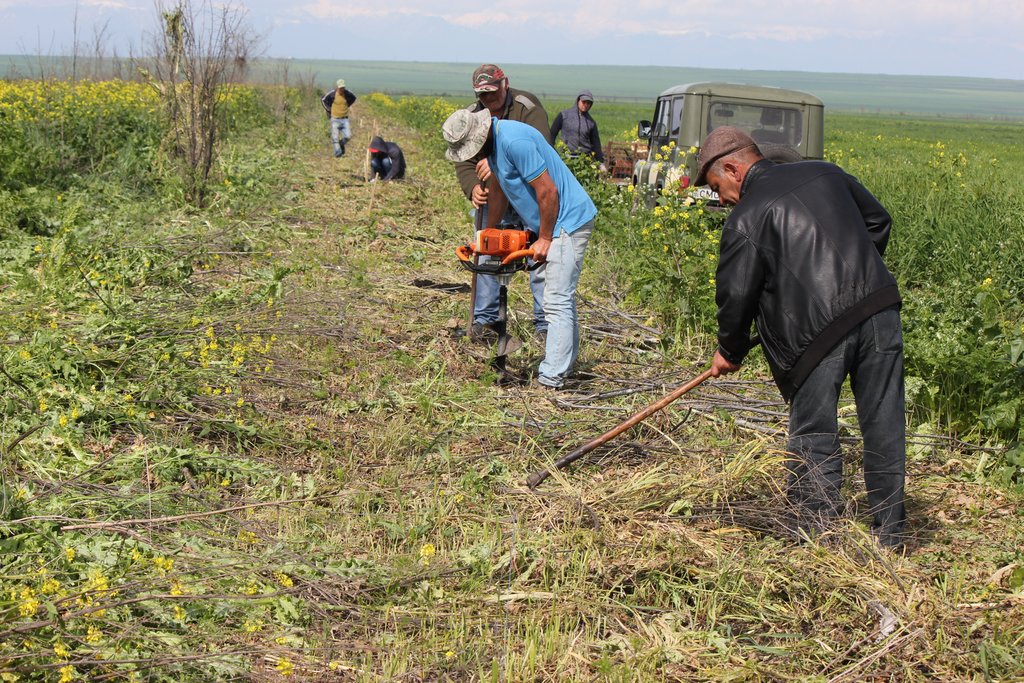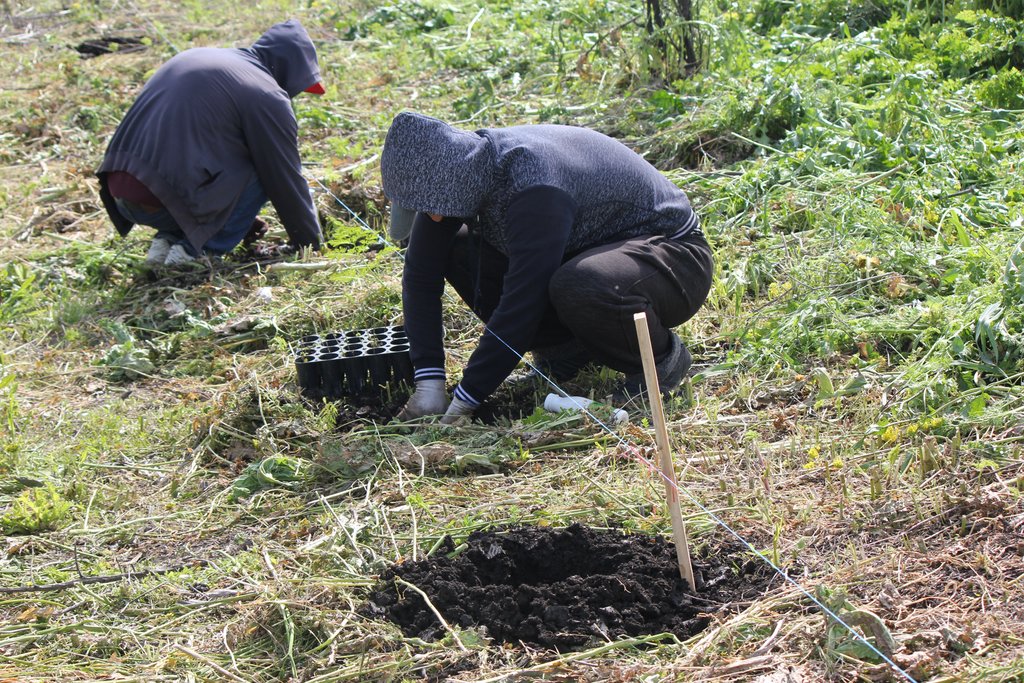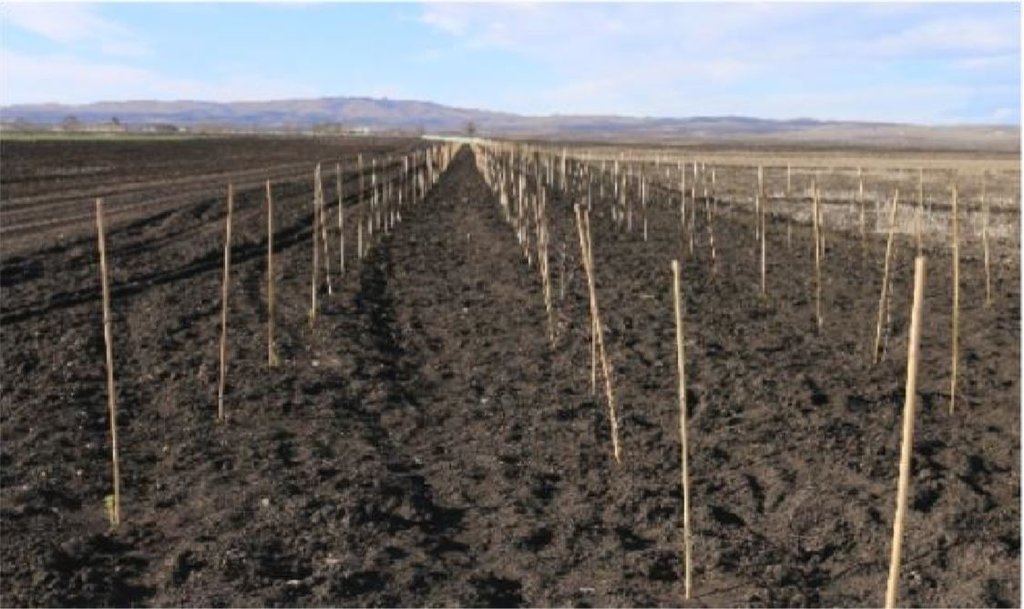Rehabilitation of Windbreaks [Грузия]
- Создание:
- Обновить:
- Составитель: Hanns Kirchmeir
- Редактор: Kety Tsereteli
- Рецензент: Rima Mekdaschi Studer
technologies_4274 - Грузия
Просмотреть разделы
Развернуть все Свернуть все1. Общая информация
1.2 Контактные данные специалистов и организаций, участвующих в описании и оценке Технологии
co-compiler:
co-compiler:
co-compiler:
Название проекта, содействовавшего документированию/оценке Технологии (если применимо)
Applying Landscape and Sustainable Land Management (L-SLM) for mitigating land degradation and contributing to poverty reduction in rural area (L-SLM Project)Название организации (-ий), содействовавших документированию/оценке Технологии (если применимо)
Regional Environmental Centre for the Caucasus (REC Caucasus) - ГрузияНазвание организации (-ий), содействовавших документированию/оценке Технологии (если применимо)
Deutsche Gesellschaft für Internationale Zusammenarbeit (GIZ)1.3 Условия, регламентирующие использование данных, собранных ВОКАТ
Составитель и ответственный(-ые) специалист(-ы) согласны с условиями, регламентирующими использование собранных ВОКАТ данных:
Да
1.4 Декларация по устойчивости описываемой Технологии
Вызывает ли описанная здесь Технология проблемы деградации земель настолько, что ее нельзя назвать природосберегающей?
Нет
2. Описание Технологии УЗП
2.1 Краткое описание Технологии
Определение Технологии:
Windbreaks are an integrated technology to increase land productivity and biodiversity at different levels. Along six kilometres, located between a road and agricultural fields, windbreaks were rehabilitated or newly established to protect the soil wind erosion. Four lines of seedlings including seven tree species were planted in two meters distance to each other. The survival rates of different tree species have been accessed and evaluated.
2.2 Подробное описание Технологии
Описание:
Agriculture plays a key role in the economy of Georgia. 74% of wheat is produced in Kakheti. Within the region, the main wheat-growing area is Shiraki valley located in Dedoplistskaro Municipality in Eastern Georgia. The valley has deep soil with high humus content offering significant potential for high agricultural yields. Among others, wind erosion and increase of evaporation due to degradation of windbreaks have led to reduced agricultural yields. At the end of the Soviet Union, there were 1.800 km of tree windbreaks in Shiraki. More than 90% of them were destroyed either by fire or illegal cuttings for firewood. Fires are caused by farmers burning harvest residues and by shepherds burning pastures and windbreaks to facilitate the growth of new grass and clear land. Today, fire still pose the greatest threat to the rehabilitation of windbreaks. Grazing by migrating sheep and by local (cattle) herds as well as firewood extraction is still causing additional damage to windbreaks in specific areas of Shiraki valley.
In Dedoplistskaro, the SLM-pilot activities focus on the establishment of a windbreak/agroforestry system to reduce wind erosion, which is here the main degradation factor and threatens agricultural production. Windbreaks are a well-known measure against wind erosion. They consist of several rows of trees and bushes on the edges of agricultural fields to reduce the wind-speed on the surface level. Slowing down of wind-speed protects the topsoil from wind erosion. Windbreaks improve the micro-climate for crops growing in their shelter by reducing moisture loss. Windbreaks also provide shelter and habitats for a wide range of plants, pollinating insects, wildlife and birds, including predators of agricultural pests.
Selection of seedlings:
Tree species well adapted to the regional conditions (climate, soil, etc.) were selected such as Pinus (Pinus eldarica, survival rate: 90%), Pistacia (Pistacia mutica, survival rate 60%) and Elm (Ulmus minor, survival rate 60%), Wild Almond (Prunus argentea, survival rate 40%), Persian olive (Eleagnus angustifolia, survival rate: 40%) and Robinia (Robinia pseudoacacia, survival rate 16%). The survival rates are based on the assessment in September 2018, 6 months after planting.
The seeds were prepared for planting in a nursery. Seedlings to be transported over long distances must be grown in special containers to ensure good root system development and minimise damage during transport. If they are grown near the planting site and the transport time is short, seedlings may also be bare-rooted.
Preparation of soil and planting:
The pilot site of the project "Applying Landscape and Sustainable Land Management (L-SLM) for Mitigating Land Degradation and Contributing to Poverty Reduction in Rural Areas", implemented by the Regional Environment Centre for the Caucasus, is six km long and located on the main road on state-owned land. Before planting the seedlings, the vegetation (grass and herbs) was cut and removed. No ploughing was done. During the implementation in 2018, the design of the site was changed to a 6 km long U-shaped form with three 10 m wide segments of windbreaks. The total area of the pilot site is 6 ha, but since there were already intact hedges in some parts, the total area where windbreaks were either newly planted or rehabilitated is 3 ha. Each windbreak consisted of four lines of tree seedlings of different species in two meters distance to each other (inter-row spacing) and 2 m distance between the seedlings within a row (intra-row spacing). First, holes were dug (30 cm diameter, 40 cm deep), then water accumulation granulate was added to keep the water better, then the seedlings of 10-40 cm height and 2-3 years old depending on species were inserted. No compost or fertiliser was used. The seedlings were protected by plastic tubes from the cold and dry winter season. Every 2nd seedling was marked with a wooden pole to distinguish them from weeds and to control the survival rate. If the survival rate falls below 50%, the trees should be replaced. After the planting of the seedling, the herbs and grass were cut again. Further cuttings took place several times to avoid shading and competition.
Maintenance
Besides cutting of weeds for 2 times in the main growing season (Mai-July) regular watering was applied. Young seedlings should be watered 2-4 times per year (first 2 years) – about 15-20l per tree. After 2 years the root system should be established in such a way that it can take care of itself. The implementation area was not fenced, but there is no pastureland around and pressure by browsing is low.
The Regional Environment Centre for the Caucasus (REC) in cooperation with GIZ has conducted a cost-benefit analysis to estimate the value of protecting remaining windbreaks, the economic impact of banning crop residue burning and the benefits of straw as a fertilizer. The survey data shows that a ban on crop residue burning will help to protect the existing windbreaks. Consequently, shredding of straw during the harvest and subsequent incorporation of straw into the soil builds up soil organic matter and helps to retain the moisture in the ground. Unclear ownership and institutional responsibility are the most relevant constraints for sustainable windbreaks management as a measure. At the political level, issues were noted, and steps were taken: A working group under the National Forest Programme selected windbreaks restoration and protection as their key topics. The Ministry of Environmental Protection and Agriculture with the support from REC and GIZ developed a policy for rehabilitation and protection of windbreaks. Based on this, a new law on windbreaks was initiated which will clarify the situation by ascribing clear responsibilities on windbreak maintenance and management. This law is still at the stage of preparation in the Agrarian Committee.
2.3 Фотографии, иллюстрирующие Технологию
2.5 Страна/ регион/ места, где применяется Технология, информация о которых собрана в данной Анкете
Страна:
Грузия
Административная единица (Район/Область):
Kakheti
Более точная привязка места:
Dedoplistskaro
Охарактеризуйте пространственное распространение Технологии :
- примененяется точечно/ на небольших участках
Технология применяется на ООПТ?
Нет
Пояснения:
The intervention was done along the main road and along two side roads heading south.
Map
×2.6 Сколько лет применяется данная Технология
Год начала реализации:
2018
2.7 Внедрение Технологии
Укажите, как именно Технология УЗП была внедрена:
- через проекты/ внешнее вмешательство
Пояснения (тип проекта и т.д.):
The rehabilitation of the windbreaks was tested on a pilot site along a highly visible road within the project "Applying Landscape and Sustainable Land Management (L-SLM) for Mitigating Land Degradation and Contributing to Poverty Reduction in Rural Areas" implemented by the Regional Environment Centre for the Caucasus (REC).
3. Классификация Технологии УЗП
3.1 Основные цели и задачи реализации Технологии
- повышение производства
- снижение или предотвращение деградации земель, восстановление нарушенных земель
- сохранение/ повышение биоразнообразия
3.2 Текущий(-ие) тип(-ы) землепользования на территории, где применяется Технология
Комбинированное землепользование в пределах одной и той же земельной единицы:
Да
Укажите сочетания типов землепользования (посевы / пастбища / деревья):
- Агролесоводство

Пахотные угодья и плантации
- Однолетние культуры
Ежегодный урожай - Уточните культуры:
- зерновые культуры - ячмень
- зерновые культуры - пшеница (яровая)
- зерновые культуры - пшеница (озимая)
Число урожаев за год:
- 2
Применяются ли посевы в междурядьях?
Нет
Применяется ли севооборот?
Нет

Леса/ лесистая местность
- Лесопосадки, облесение
Лесопосадки. облесение: Укажите происхождение и состав видов:
- Смешанные культуры
Тип лесонасаждений, облесение:
- умеренная степная плантация
Вид деревьев:
- Виды Сосны
- Ulmus minor, Pinus eldarica, Elaeagnus angustifolia, Cotinus coggygria , Pistacia mutica, Ulmus minor, Robinia pseudoacacia, Prunus argentea
Являются ли указанные выше деревья лиственными или вечнозелеными?
- смешанные лиственные / вечнозеленые
Продукции и услуги:
- Дрова
- Природоохранные/ защитные
- Защита от природных катаклизмов
- Protection soil from wind erosion
Пояснения:
When the windbreak is established and dense, selective logging of firewood is possible.
3.3 Изменилось ли использование земель в связи с внедрением Технологии?
Изменилось ли использование земель в связи с внедрением Технологии?
- Нет (см. пункт 3.4)
3.4 Водоснабжение
Обеспеченность водой участков, где реализуется Технология :
- богарные земли
Пояснения:
The crop-fields are not irrigated. Only the young seedlings of the rehabilitated windbreak are irrigated 2-4 times a year in the first 2-3 years.
3.5 Категория УЗП, к которой относится Технология
- агролесоводство
- Защитные лесные насаждения
3.6 Мероприятия УЗП, выполняемые в рамках Технологии

Мероприятия с использованием растительности
- Р1: Древесный и кустарниковый покров
3.7 Основные проблемы деградации земель, на решение которых направлена Технология

ветровая эрозия почв
- Эп: утрата плодородного слоя почвы

деградация водных ресурсов
- Ва: почвенная засуха
Пояснения:
In addition to the loss of topsoil, the reduction of wind speed and the degree of vegetation reduce the evapotranspiration rate of the crop and thereby the amount of water.
3.8 Предотвращение и снижение деградации земель, или восстановление нарушенных земель
Укажите цель Технологии по отношению к деградации земель :
- снижение деградации земель
Пояснения:
The windbreak will reduce soil erosion caused by wind on neighbouring crop fields.
4. Технические характеристики, мероприятия по практической реализации, вложения и стоимость
4.1 Технический рисунок, иллюстрирующий Технологию
Спецификация (пояснения к техническому рисунку):
Planting scheme for windbreak rehabilitation.
Автор:
Hanns Kirchmeir
Дата:
15/11/2017
Спецификация (пояснения к техническому рисунку):
Location of windbreaks along the main and side roads. During implementation the design of the site was changed to an u-shaped form built by 3 windbreaks. The windbreaks that are included in the rehabilitation were segmented into four:
Windbreak A1 - Replanting new seedlings - 458 length (m);
Windbreak A2 - Removal of dry biomass - 403 length (m);
Windbreak B - Replanting new seedlings - 2.560 length (m);
Windbreak C - Replanting new seedlings - 2.354 length (m).
While in the segments A1, B and C the tree cover is very low and new seedlings are needed, in segment A2 there is still a dense crown cover.
To protect the existing trees in segment A2, the dry biomass under the crown (dry herbs and grass, dead trees & branches) was removed to reduce the amount of fuel in the case of a fire. This process was just started at the north end of A2.
In Segment B Pistacia mutica, Ulmus minor, Robinia pseudoacacia, Cotinus coggygria and Wild almond (Prunus argentea) have been planted.
In Segment C Pinus eldarica, Elaeagnus angustifolia Pistacia mutica, Ulmus minor, Robinia pseudoacacia and Wild almond (Prunus argentea) have been planted.
Автор:
Hanns Kirchmeir
Дата:
15/09/2017
Спецификация (пояснения к техническому рисунку):
Planting scheme for windbreaks rehabilitation.
The distance between the lines is 2m and the distance between seedlings within a line is also 2m. About every second seedling is marked with a wooden pole (50 cm). This is done on the one hand to control the survival rate (if every second seedling is, the next seedling is only 2m away and easy to find) and on the other hand to identify and leave the seedlings standing when the weeds are cleared.
Автор:
Hanns Kirchmeir
4.2 Общая информация по необходимым вложениям и стоимости
Уточните, как рассчитывались затраты и вложения:
- на площадь, где применяется Технология
Укажите размер и единицу площади:
3 ha
другая/ национальная валюта (название):
GEL
Если это необходимо, укажите обменный курс от доллара США к местной валюте (например, 1 доллар США = 79,9 бразильского реала): 1 доллар США =:
2,7
Укажите среднюю дневную заработную плату наемных работников:
15 USD
4.3 Мероприятия, необходимые для начала реализации
| Деятельность | Время (сессия) | |
|---|---|---|
| 1. | Marking sites in the field | April-May |
| 2. | Cut grass and remove dead wood | April |
| 3. | Planting of seedlings (planting, adding wooden poles and water accumulation granulate | April-May |
| 4. | Irrigation and weed-cutting | July, August (to be repeated for 3 years) |
| 5. | Scientific Monitoring | October - October (five years) |
4.4 Вложения и затраты, необходимые для начала реализации
| Опишите затраты | Единица | Количество | Затраты на единицу | Общая стоимость на единицу | % затрат, оплаченных землепользователями | |
|---|---|---|---|---|---|---|
| Оплата труда | Clearing and preparation of sites (3 ha) | person days | 40,0 | 30,0 | 1200,0 | 0,0 |
| Оплата труда | Weed cutting 2 x on 3 ha | person days | 110,0 | 36,0 | 3960,0 | 0,0 |
| Оплата труда | Planting of 7.300 seedlings (digging hole, adding water accumulation granulate, planting seedling, adding wooden pole and tube) | person days | 73,0 | 45,0 | 3285,0 | 0,0 |
| Оплата труда | Irrigation 4 x 7.300 seedlings | person days | 73,0 | 75,0 | 5475,0 | 0,0 |
| Оборудование | Wooden poles | pieces | 7300,0 | 0,9 | 6570,0 | 0,0 |
| Оборудование | Water accumulation granulate | kg | 73,0 | 70,0 | 5110,0 | 0,0 |
| Оборудование | Water for irrigation | m³ | 300,0 | 3,0 | 900,0 | 0,0 |
| Оборудование | Transport of water (water truck) | applications | 4,0 | 1300,0 | 5200,0 | 0,0 |
| Посадочный материал | Pistacia mutica | pieces | 470,0 | 3,0 | 1410,0 | 0,0 |
| Посадочный материал | Robinia pseudoacacia | pieces | 1825,0 | 1,0 | 1825,0 | 0,0 |
| Посадочный материал | Pinus eldarica | pieces | 117,0 | 5,0 | 585,0 | 0,0 |
| Посадочный материал | Ulmus minor | pieces | 1355,0 | 2,0 | 2710,0 | 0,0 |
| Посадочный материал | Amygdalus communis | pieces | 1238,0 | 1,0 | 1238,0 | 0,0 |
| Посадочный материал | Elaeagnus angustifolia | pieces | 1237,0 | 0,75 | 927,75 | 0,0 |
| Другие | Transportation of workers and materials by lorry | transfers | 50,0 | 60,0 | 3000,0 | 0,0 |
| Общая стоимость запуска Технологии | 43395,75 | |||||
| Общие затраты на создание Технологии в долларах США | 16072,5 | |||||
Если землепользователем оплачено менее 100% затрат, укажите, кем покрывались остальные затраты:
GEF-Funds have been used to finance all of the activities
4.5 Поддержание/ текущее обслуживание
| Деятельность | Сроки/ повторяемость проведения | |
|---|---|---|
| 1. | Watering the seedlings | Every 2-3 weeks during dry period in July-September |
| 2. | Preparing fire-break around windbreak | August, after harvesting the crops |
| 3. | Weed cutting between seedlings | 1-2 times between June and August |
| 4. | Replacing dead trees by new seedlings (if needed) | October/November |
Пояснения:
Here the maintenance is applied in the second year. Irrigation and weed cutting of the first year are already integrated in the establishment costs.
4.6 Стоимость поддержания/ текущего обслуживания ( в год)
| Опишите затраты | Единица | Количество | Затраты на единицу | Общая стоимость на единицу | % затрат, оплаченных землепользователями | |
|---|---|---|---|---|---|---|
| Оплата труда | Weed cutting 2 times on 3 ha | person days | 110,0 | 37,0 | 4070,0 | 0,0 |
| Оплата труда | Irrigation 4*7.300 seedlings | person days | 73,0 | 75,0 | 5475,0 | 0,0 |
| Оплата труда | Protect firebreak around windbreak | person days | 4,0 | 100,0 | 400,0 | 0,0 |
| Оборудование | Water (10l/seedling*4) | m³ | 300,0 | 3,0 | 900,0 | 0,0 |
| Оборудование | Transport of water (water truck) | application | 4,0 | 1300,0 | 5200,0 | 0,0 |
| Общая стоимость поддержания Технологии | 16045,0 | |||||
| Общие затраты на поддержание Технологии в долларах США | 5942,59 | |||||
Если землепользователем оплачено менее 100% затрат, укажите, кем покрывались остальные затраты:
The full costs were covered by the project
Пояснения:
The maintenance costs are calculated for the second year
4.7 Наиболее значимые факторы, влияющие на стоимость затрат
Опишите наиболее значимые факторы, влияющие на стоимость затрат:
How often weeds need to be cut, survival rate of trees
5. Природные и социально-экономические условия
5.1 Климат
Среднегодовое количество осадков
- < 250 мм
- 251-500 мм
- 501-750 мм
- 751-1000 мм
- 1001-1500 мм
- 1501-2000 мм
- 2001-3000 мм
- 3001-4000 мм
- > 4000 мм
Укажите среднегодовое количество осадков (если известно), мм:
697,00
Пояснения/ комментарии по осадкам:
The driest month is January, with 25 mm of rainfall. The greatest amount of precipitation occurs in June, with an average of 108 mm. The difference in precipitation between the driest month and the wettest month is 83 mm.
Укажите название соответствующей метеостанции:
Dedoplistskaro Met. Station
Агроклиматическая зона
- полузасушливая
The climate is warm and temperate in Dedoplistskaro. The average annual temperature in Dedoplistskaro is 11.3 °C. The warmest month of the year is July, with an average temperature of 22.7 °C. The lowest average temperatures in the year occur in January, when it is around 0.1 °C.
5.2 Рельеф
Склоны (преобладающие):
- пологие (0-2%)
- покатые (3-5%)
- покато-крутые (6-10%)
- крутые (11-15%)
- очень крутые (16-30%)
- чрезвычайно крутые (31-60%)
- обрывистые (>60%)
Формы рельефа:
- плато/ равнины
- гребни хребтов/холмов
- склоны гор
- склоны холмов
- подножья
- днища долин
Зона высотной поясности:
- 0-100 м над уровнем моря
- 101-500 м н.у.м.
- 501-1000 м н.у.м.
- 1001-1500 м н.у.м.
- 1501-2000 м н.у.м.
- 2001-2500 м н.у.м.
- 2501-3000 м н.у.м.
- 3001-4000 м н.у.м.
- > 4 тыс. м н.у.м.
Укажите, приурочено ли применение Технологии к специфическим условиям:
- не имеет значения
5.3 Почвы
Средняя мощность почв:
- поверхностные (0-20 см)
- неглубокие (21-50 см)
- умеренно глубокие (51-80 см)
- глубокие (81-120 см)
- очень глубокие (> 120 см)
Гранулометрический состав (верхнего горизонта):
- тонкодисперсный/ тяжёлый (глинистый)
Гранулометрический состав (на глубине более 20 см):
- тонкодисперсный/ тяжёлый (глинистый)
Содержание органического вещества в верхнем горизонте:
- высокое (> 3%)
Если возможно, приложите полное описание почв или укажите доступную информацию, например тип почв, рH/ кислотность почв, ёмкость катионного обмена, содержание азота, содержание солей и т.д.
The soils are clay rich Chernosems and Kastanosems.
5.4 Доступность и качество воды
Уровень грунтовых вод:
5-50 м
Доступность поверхностных вод:
недостаточны/ отсутствуют
Качество воды (без обработки):
питьевая вода хорошего качества
Качество воды относится к:
грунтовые воды
Является ли солёность воды проблемой?
Нет
Происходят ли периодические затопления территории?
Нет
Комментарии и дополнительная информация по качеству и количеству воды:
There is no local access to water. The water for irrigation had to be moved from the village 15 km away.
5.5 Биоразнообразие
Видовое разнообразие:
- низкое
Разнообразие местообитаний:
- низкое
Комментарии и дополнительная информация по биоразнообразию:
The windbreaks add important habitat diversity to the landscape. They act as corridors, breeding and feeding habitat especially for small mammals and birds.
5.6 Характеристика землепользователей, применяющих Технологию
Осёдлый или кочевой:
- Осёдлый
Рыночная ориентация производства:
- смешанный (натуральный / коммерческий)
Доходы из других источников:
- < 10% всех доходов
Относительный уровень достатка:
- плохой
Индивидуальное или коллективное хозяйство:
- частное/ домовладение
Уровень механизации:
- механизировано/ есть автотранспорт
Пол:
- мужчины
Возраст землепользователей:
- средний возраст
5.7 Средняя площадь земель, используемых землепользователями с применением Технологии
- < 0,5 га
- 0,5-1 га
- 1-2 га
- 2-5 га
- 5-15 га
- 15-50 га
- 50-100 га
- 100-500 га
- 500-1000 га
- 1000-10000 га
- > 10000 га
Считается ли это мелким, средним или крупным хозяйством (по местным масштабам)?
- мелкое
5.8 Собственность на землю, права на земле- и водопользование
Землевладелец:
- государственная
- индивидуальная, оформленная в собственность
Право землепользования:
- аренда
- индивидуальное
Права на землепользование основаны на традиционной правовой системе?
Да
5.9 Доступ к базовым услугам и инфраструктуре
медицинское обслуживание:
- плохой
- средний
- хорошая
образование:
- плохой
- средний
- хорошая
технические консультации:
- плохой
- средний
- хорошая
занятость (вне хозяйства):
- плохой
- средний
- хорошая
рынки:
- плохой
- средний
- хорошая
электроснабжение:
- плохой
- средний
- хорошая
транспорт и дорожная сеть:
- плохой
- средний
- хорошая
водоснабжение и канализация:
- плохой
- средний
- хорошая
финансовые услуги:
- плохой
- средний
- хорошая
6. Воздействия и заключительные положения
6.1 Влияние Технологии УЗП в пределах территории ее применения
Социально-экономическое воздействие
Продуктивность
производство сельскозяйственных культур
Комментарий/ пояснения:
The positive effect on crop yields will be visible when trees in the windbreak get higher than 3 meters.
производство древесины
Комментарий/ пояснения:
First harvest of firewood is expected in 15-20 years
Экологическое воздействие
Водный цикл/ поверхностный сток
испарение
Комментарий/ пояснения:
Due to an expected reduction in wind speed near the ground, the evaporation rate is expected to decrease after the trees have reached a height of more than 5 m. So far, no data from measurements are available.
Почвы
влажность почв
Комментарий/ пояснения:
Due to an expected reduction in wind speed near the ground, the evapotranspiration rate is expected to decrease after the trees have reached a height of more than 5 m, which would lead to an increase in soil moisture. So far, no data from measurements are available.
утрата почв
Комментарий/ пояснения:
Due to the reduction in wind speed, it is expected that the amount of soil erosion caused by wind will decrease when the trees have reached a height of more than 5 m.
Биоразнообразие: растительность, животный мир
разнообразие флоры
Комментарий/ пояснения:
Windbreaks are refuge areas for plant species sensitive to herbicides and plowing.
разнообразие фауны
Комментарий/ пояснения:
The windbreaks provide shelter and breeding habitat for birds and small mammals. Tree litter improves soil conditions and has positive effect on soil-invertebrate diversity.
Климат и снижение риска стихийных бедствий
скорость ветра
Комментарий/ пояснения:
The expected impact is a reduction of wind velocity up to 200 m after the windbreak, which will lead to reduced wind erosion of top soil. This effect is related to tree height and will need 2-3 decades to gain full impact.
микроклимат
Комментарий/ пояснения:
The expected impact is a reduction of wind velocity up to 200m after the windbreak, which will lead to a decrease in evaporation. This effect is related to tree height and will need 2-3 decades to gain full Impact.
6.2 Влияние Технологии за пределами территории ее применения
отложения, переносимые ветром
Комментарий/ пояснения:
By reducing the wind speed, the amount of soil erosion by wind is expected to decrease when the trees have reached a height of more than 5 m. The positive influence on the neighbouring field can be observed up to a distance of twice the height of the trees.
ущерб прилегающим полям
Комментарий/ пояснения:
By reducing the wind speed, the amount of soil erosion by wind is expected to decrease when the trees have reached a height of more than 5 m. The positive influence on the neighbouring field can be observed up to a distance of twice the height of the trees.
воздействие парниковых газов
Количество до применения УЗП :
10 t CO2-eqiv/ha
Количество после применения УЗП:
200 t CO2-eqiv/ha
Комментарий/ пояснения:
The increase in the volume of wood on the windbreak increases carbon storage in the ecosystem. The rehabilitation of a completely destroyed windbreak can increase the biomass volume by 100-200 m³/ha, which corresponds to 100-200 t carbon dioxide.
6.3 Подверженность и чувствительность Технологии УЗП к постепенным изменениям климата и экстремальным погодным явлениям/ стихийным бедствиям, связанным с изменением климата (в понимании землепользователей)
Постепенное изменение климата
Постепенное изменение климата
| Сезон | увеличение или уменьшение | Насколько успешно Технология справляется с этим? | |
|---|---|---|---|
| среднегодовые температуры | увеличилось | хорошо | |
| среднегодовое количество осадков | снизилось | умеренно |
Пояснения:
Only drought resistant tree species have been selected. But during the first years after planting the root system is not well developed and irrigation is recommended.
6.4 Анализ эффективности затрат
Насколько получаемый результат сопоставим с первоначальными вложениями (с точки зрения землепользователей)?
Эффективность затрат в краткосрочной перспективе:
отрицательно
Эффективность затрат в долгосрочной перспективе:
слабо позитивное
Насколько получаемый результат сопоставим с текущими расходами по поддержанию технологии (с точки зрения землепользователей)?
Эффективность затрат в краткосрочной перспективе:
отрицательно
Эффективность затрат в долгосрочной перспективе:
позитивное
Пояснения:
It is a significant investment to establish a windbreak and it takes several years (5-10) before the measure will show effects on the increase of crop fields' productivity. But when established, the windbreak does not need investment for maintenance but can deliver additional benefit (fuel wood).
6.5 Внедрение Технологии
- 1-10%
Среди применяющих Технологию землепользователей, какова доля лиц, применяющих её по собственной инициативе, т.е. без какого-либо материального стимулирования со стороны?
- 0-10%
6.6 Адаптация
Была ли Технология УЗП изменена в недавнее время с целью адаптации к меняющимся условиям среды?
Да
Если да, укажите, по отношению к каким именно изменяющимся условиям среды произведена адаптация?
- изменения климата/ экстремальные погодные явления
Укажите, что именно изменилось в Технологии (дизайн, используемые материалы или виды растений/животных и т.д.):
The selection of tree species and planting technologies was adapted to the rising temperatures. Special protection tubes against winter storms were used.
6.7 Сильные стороны/ преимущества/ возможности Технологии
| Сильные стороны/ преимущества/ возможности по мнению землепользователей |
|---|
| Increase of yields in the neighbouring fields |
| Availability of firewood |
| Сильные стороны/ преимущества/ возможности по мнению составителя или других ключевых специалистов |
|---|
| Seedlings can be produced locally in tree nurseries using local tree species. |
| Increase of protection from wind erosion and drought by wind impact. |
| Increase of habitat diversity |
6.8 Слабые стороны/ недостатки/ риски Технологии и пути их преодоления
| Слабые стороны/ недостатки/ риски по мнению землепользователей | Возможные пути их преодоления/снижения? |
|---|---|
| Fires | protecting the windbreak by ploughing the soil along the line |
| Lack of maintenance of planted seedlings | cutting the grass and removing it from the field, continue mulching and watering the seedlings over the next few years, replanting the dead seedlings |
| Слабые стороны/ недостатки/ риски по мнению составителя или ответственных специалистов | Возможные пути их преодоления/снижения? |
|---|---|
| High investment for seedlings, wooden poles and irrigation | It is much cheaper to protect existing windbreaks from burning. Integrating fruit trees and/or vegetables into the windbreak can result in a faster return on investment. |
7. Справочные материалы и ссылки
7.1 Методы сбора/ источники информации
- выезды на места, полевые обследования
Field visits have been done in summer 2017 and 2018
- опросы специалистов/экспертов по УЗП
Kety Tsereteli | REC Caucasus , Amiran Kodiashvili, GIZ GE , Georgi Gambashidze
- данные, собранные из отчетов и достоверных документов
Project Reports from national and international experts (REC-Caucasus). Reports from GIZ - IBiS Program on windbreak Rehabilitation Pilot Project.
Когда были собраны данные (на местах)?
01/09/2018
7.2 Ссылки на опубликованные материалы
Название, автор, год публикации, ISBN:
Applying Landscape and Sustainable Land Management (L-SLM) for mitigating land degradation and contributing to poverty reduction in rural areas - Implementation Evaluation Report June 2018 – Windbreaks.
7.3 Ссылки на соответствующую онлайн-информацию
Название/ описание:
Approach for “Rehabilitation of Windbreaks in East Georgia”
Адрес в сети Интернет:
https://biodivers-southcaucasus.org/uploads/files/Approach%20Windbreak%20Rehabilitation%20Georgia.pdf
Ссылки и модули
Развернуть все Свернуть всеСсылки
Нет ссылок
Модули
Нет модулей


